Please view our updated COVID-19 guidelines and visiting procedures →.

Much has been written about the best time to enlist hospice care, and there are certainly many medical and personal decisions to make. Since we see patients and families deal over and over with the same issues, we thought it might be useful to provide an overview of what they consider at such an emotional time. While the priorities may differ from person to person, a framework can help, especially at a time when it may be difficult to think calmly and concisely.
Sometimes he or she is no longer able to verbalize desires, and sometimes those choices may change. For example, a wise doctor once gave a talk that can basically be summarized by stating that, when facing the possibility of death, most people choose life. That means that compromises in mobility, independence, and comfort, that may previously be rejected on principle, may be tolerated and even chosen, as illness progresses. Therefore, stated directives about health care choices may go out the window. If the patient is not competent, it becomes harder, and what he/she said at some earlier time may still be honored.
It is often true, as the end of life unfolds, that there are dips in ability followed by plateaus before another event takes the patient to a lesser state of functioning once again, which can be followed by a second plateau. This can go on for days, months, or years. The patient is often unhappy at the outset, but can become inured to the lesser capability, and even accepting. Someone who refused a walker or wheelchair, for instance, may use one when there is no practical alternative.
When speaking with the patient’s physician, the issue of further treatment can arise, and it can be hard to hear the real answer being given. Often, the easiest question for the doctor to answer, and the easiest to interpret, can be this: What would you do, if this were your parent, your spouse, or your child? Put that way, he/she is not being asked what to do, what is possible, or what the correct choice is. It is simply one person trying to judge the alternatives, based on what others might have chosen in similar circumstances. Asking about specific procedures is often better to frame in a statistical way, to avoid misunderstandings: What are the chances that this will work? What percentage of people get a meaningful extension of life from this?

Once the medical side of the equation has been addressed, it is time to move onto preferences and feelings. The most basic question, then, to answer is this: What are your acceptable standards for living? This covers many things, from feeding tubes to mental capacity to chemotherapy. It is up to the patient to decide, whenever possible, how he or she wishes to proceed. Many choose to be DNR/DNI. (N.B. Although our inpatient facility takes admissions of those who wish to be resuscitated or intubated, we ourselves aren’t trained in those procedures, so call 911 like everyone else.) Others decide to forego further treatment, especially if it is painful or not working. Some even refuse food, particularly when the will to live has gone. Our job, not unlike that of family members, is to honor the patient’s wishes to the best extent possible. We strive to make someone comfortable and peaceful, and do not assume that we know what that means for any specific person.
That brings up the second question: Do you have any unfinished business, or last wishes? We hear so often about the proverbial bucket list, and many of us are busily checking things off that list now. However, there comes a point at which it seems not possible to fulfill further wishes. However, whenever possible, we as staff try to make those dreams a reality. That’s why we have weddings at Connecticut Hospice, either of patients, or of family members.
Sometimes, the request is to feel the ocean water on their toes one more time. In one such case, a social worker brought the patient’s bed to the water’s edge, and dumped buckets of water on his feet. He passed away within a couple of hours, a happy man. Going home one last time can be important, especially if there have been prolonged hospital or nursing home stays. That has been arranged for some people. Saying goodbye can mean seeing a beloved pet, and we have had them at Connecticut Hospice—most notably, a horse on the back lawn.
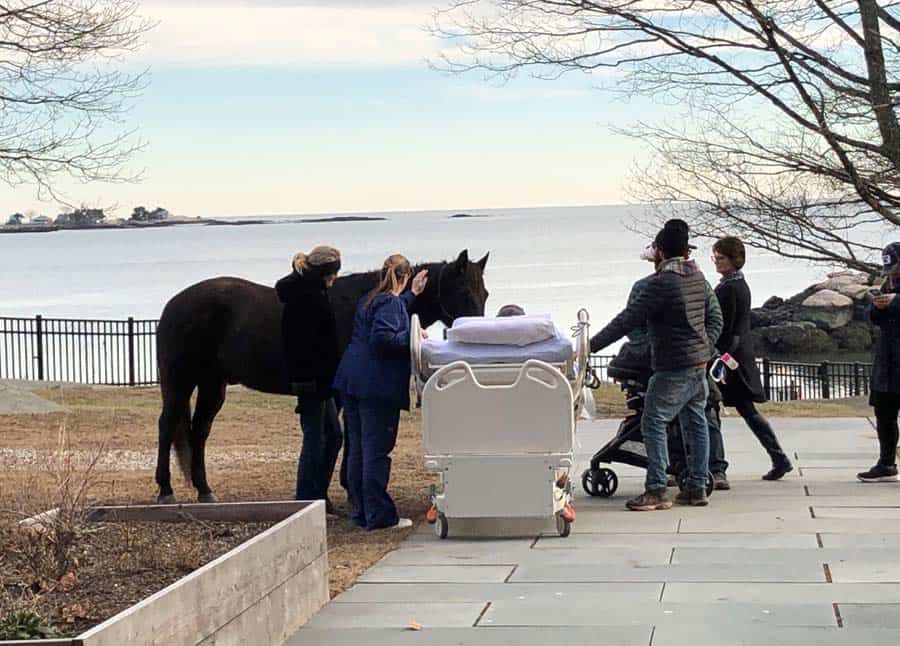
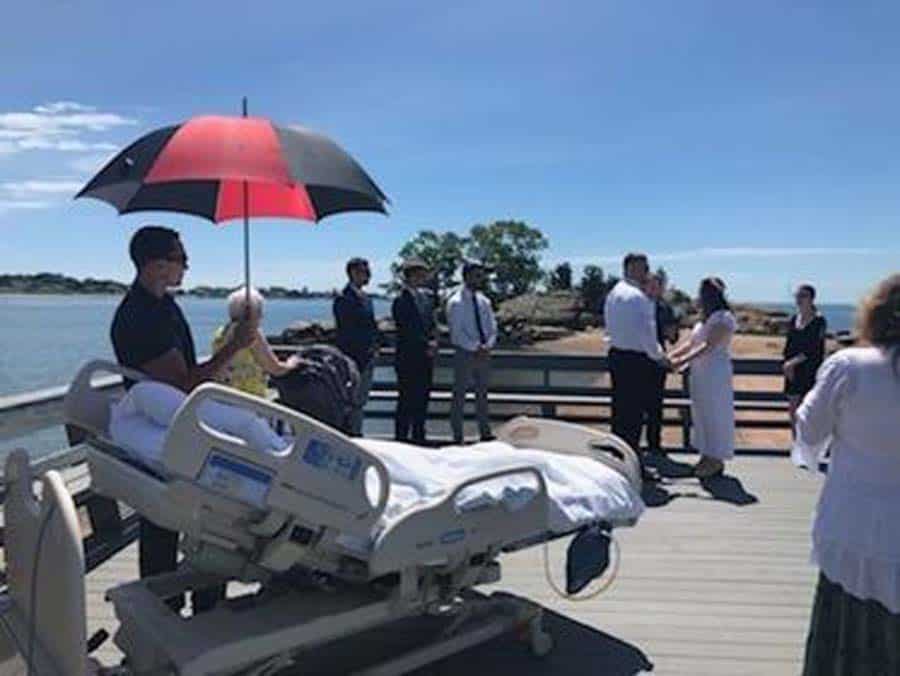
We often tell families that it is important to say three things: I love you; I forgive you; and we will be ok if you leave us. So many people end up regretting that they stopped their loved one from talking about death, which can be an important part of the dying process. Letting him or her express final emotions can be very satisfying for them, and for the listener as well. Peace means many things to many people, but often it comes from letting negative emotions go, or apologizing or reconciling with someone. Helping that happen begins with asking the patient about closure.
Again, it is hard, but important, to resist changing the subject, or saying that there is plenty of time to discuss things later. The patient knows his or her timetable best of all, and it can be a great comfort to settle some practicalities. Not infrequently, patients choose lesser levels of medication, even when it means more pain, in order to keep a clear mental status. Often that is for the purpose of having such discussions. They can even be prompted with your own question: Is there anything you want to tell me?
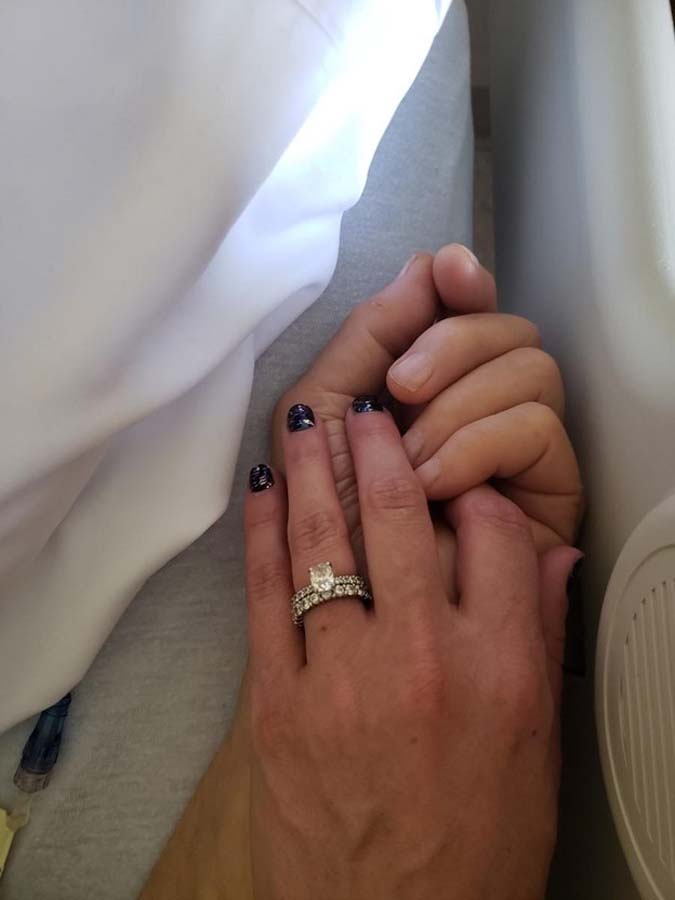
For the many people who find this all difficult, they should realize that they are performing a great service is allowing tough questions to be answered. Providing someone with the gift of being heard is something you can do for him or her, when there is little else you can do. Even prompting memories allows the patient to realize that he or she will not be forgotten—a basic human desire, and one we are all likely to fulfill. Creating memories at the bedside can enrich those final days, and leave those mourning with smiles, even through tears.
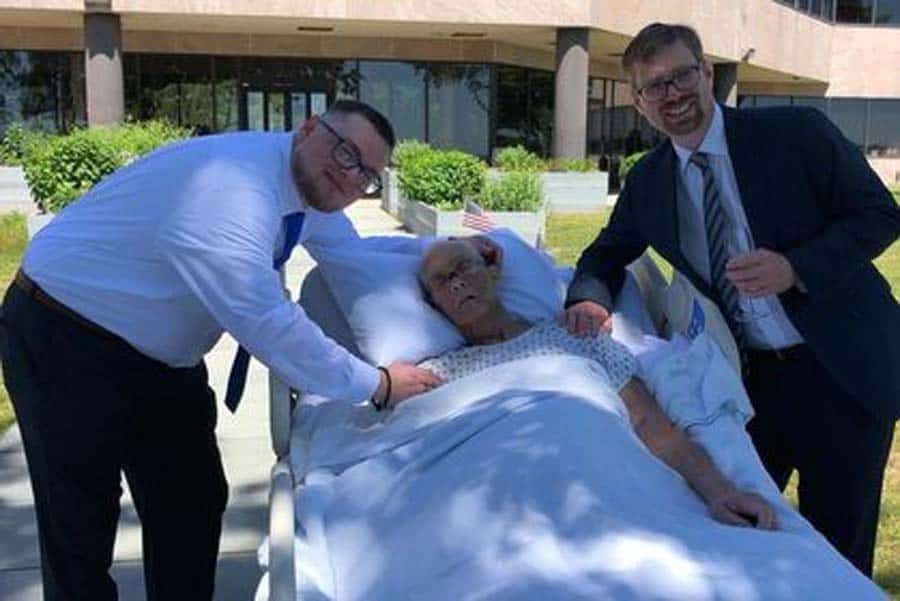
Connecticut Hospice has always been an institution that honors final wishes, choices, and requests. We are grateful to be able to provide patients and families with the comfort that brings, and a privilege to have shared those moments with so many through the decades we have served our communities.
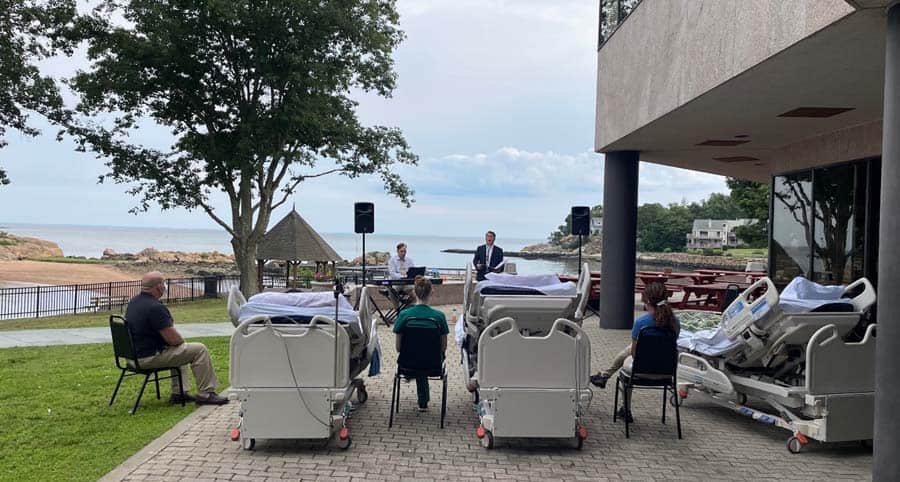
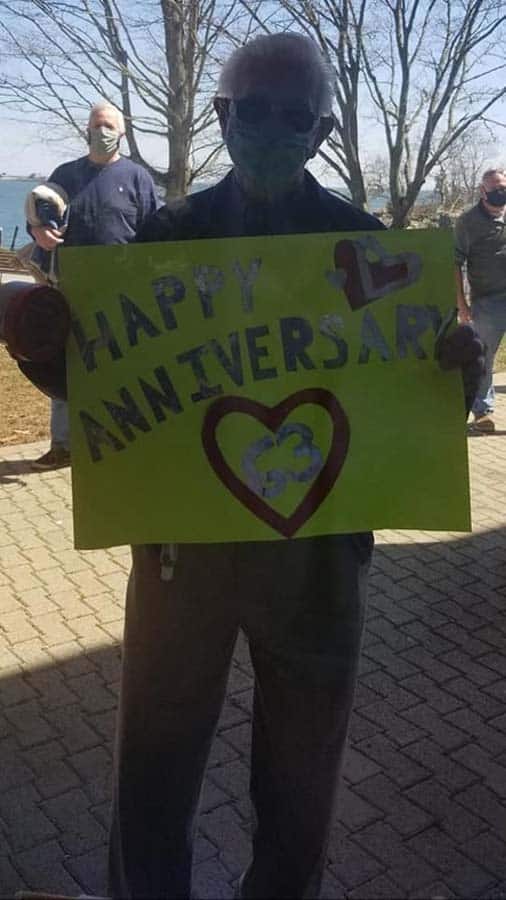

One of the members of the Hospice team is a chaplain who interacts with other team members in providing total care to our patients who are facing end-of-life issues. In the context of hospice care, spiritual issues and/or spirituality is not confined to one singular religious experience. The chaplain has a broad knowledge of many world religions and is sensitive to their understanding of how these challenges intermesh with the patient’s faith journey at this point in time.
Spirituality may not include an organized faith journey for some of our hospice patients. A sense of meaning in their place in the world in relation to nature, humanity, and a sense purpose all come together in a form of recognized spirituality. The Connecticut Hospice chaplain is here to listen and accompany the patient through this journey.

Spiritual Care is an important component of the comprehensive care plans at Connecticut Hospice. The Hospice Chaplain sits and listens firstly to the patient and hears what they perceive as what is occurring to them. They may express fear, have an unknown feeling of uneasiness, or lack acceptance of the concept of end of life. The chaplain hears the many concerns and transforms these issues into a plan of care. This plan is utilized to help the patient address their issues and to be comforted in the end-of-life process. As chaplain and patient progress in their relationship, adjustments may be made to further a compassionate plan of care that is individually designed to each person’s perceived needs.
This process includes family and friends who can give insight that the patient, because of illness, is not able to remember. The chaplain is also present for family members who struggle at this time of perceived loss. There are so many emotions present: anticipatory grief, anger, depression, and guilt. They begin to manifest themselves in many diverse ways. The chaplain, who is a trained medical-spiritual professional, can address these issues as they arise in the patient and with family members. The Chaplain, as a member of a highly trained team, receives observations from the social worker, nurse, doctor, and team directors that prompts changes to the plan of care to be sensitive to comfort and compassionate care.
A healthy spiritual outlook connects to an overall sense of well-being. This can affect the management of pain, producing a higher level of mental physical comfort. The main hospice goal is always comfort. The chaplain aids in accomplishing that objective.

Chaplains understand the intimate relationship patients have with religion, spirituality and the nature of earthly existence and, specifically, different ethnic cultures. They have spent many hours studying cultures and how they affect each and every being. Even though the family and patient may heavily rely on local clergy, the chaplain is critical in providing ongoing presence and developing a friendship that brings comfort and assurance to all concerned. When the family has its own clergy or spiritual guide, the Hospice Chaplain can assist in notifying that person, and arranging a visit. This specific attention from a pastor is different from the broad spectrum of what spiritual care can encompass.
Looking once again at families, as time progresses and their loved one’s illness progresses, new emotions and expressions among family members emerge. A weekly call from the chaplain can be very beneficial to the family, just knowing someone else cares, someone else understands, someone else knows how they feel.
The Chaplain may suggest reading material that can guide them in their emotions. Sometimes there is a specialized plan for children in what maybe a first-time experience with end-of-life issues. The chaplain is prepared to gently explain what is happening to grandma and to compassionately listen to and answer their questions.
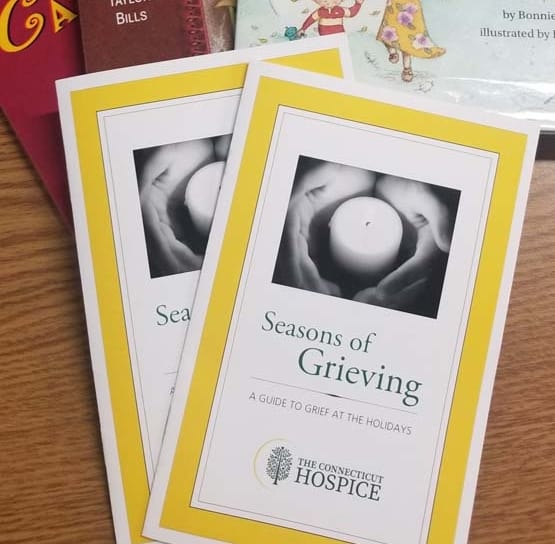
As time progresses, we continue to honor the hospice philosophy that no one should approach death alone. As a critical part of the team, the chaplain is present, if applicable, to once again inform the local clergy, if desired by the patient or family. He or she will be invited to join in with the team in aiding the patient to transition comfortably. The Chaplain, who has at this point developed a relationship with the family, has become a trusted member of the patient’s circle. The chaplain knows the patient’s needs and can help by expressing them at this crucial moment. Again, no one dies alone. Family members will be called and informed that death is near and the chaplain will be present as a guide.
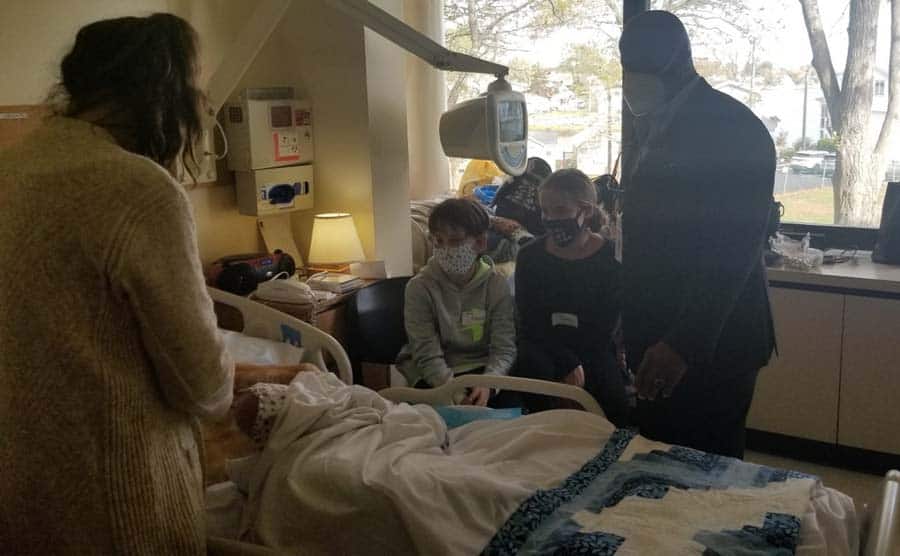
Family members may need counseling or compassionate listening at this time. The chaplain can find a neutral place to allow family members to express their feelings and needs. When death occurs, the family can gather with the chaplain for prayer and blessing.
The journey can continue with the family with helping in appropriate funeral planning in keeping with cultural, religious, and spiritual understanding of each unique family situation. In the weeks ahead the chaplain and a specialized bereavement team member will check in with the family.
Sometimes we are asked to give prayers, or even facilitate a service for the family and friends of the loved one. Then, along with the social workers, we usually turn to the Bereavement Director, who steps in after death, for the thirteen months of grief counselling formally provided. While time limits are fluid, the year or so of formal groups or sessions is seen as a benchmark by Medicare, that accommodates most survivors in that setting.

Currently, Connecticut Hospice has a team of three pastoral care professionals, along with six social workers and a Bereavement Director. In addition, we have many volunteers, who participate from the time of admission, through the transition itself—especially when family members are not able to be present—and afterward, to assist in many ways. Many of them have suffered similar losses, and this is their way of giving back what hospice care provided to them in their time of need. Every team member offers a unique and highly specialized view towards hospice care. The chaplain is one of the team that aids all concerned to a compassionate, informed journey through the end of life.


Food is thought to be one of life’s greatest pleasures. Most of us equate food as a means to nurture and show love. To share a meal is to have a sense of togetherness. We know that nutrients from the food we consume are used to build muscle, provide energy, and most simply, enable all our bodies’ intricate processes to occur. For patients that are nearing the end of life, it is often hard to recognize and accept that the body does not require, nor can it utilize, the nutrients from food the way it once did.
End of life does not indicate a patient’s age or illness, but rather the nearing of the end of a patient’s life. This stage can be the result of a serious chronic illness, such as; heart disease, cancer, stroke, dementia, diabetes, or an accidental injury. Typically, when a patient is initially diagnosed with a serious chronic illness, the patient receives Palliative Care, which focuses on relief of symptoms and stress as a result of the serious illness. Dietary changes may be necessary, but food remains a major source of nutrition and health for the patient.
When a patient is known to be in the end of life stage, they most likely would be receiving hospice care. Hospice Care differs from Palliative Care in that life expectancy is six months or less. Some patients accept their terminal prognosis and begin receiving hospice care immediately, while others chose to continue pursuing a curative treatment. When hospice care does begin, the focus on food and nutrition changes dramatically.
Throughout life the body works hard to grow, build and repair, but the opposite happens at the end of life. The body focuses on transitioning to shutting the processes down, thus requiring less in the way of nutrition. When Connecticut Hospice starts providing hospice care to a patient, whether at its inpatient facility in Branford, in a patient’s home, be it a private residence or another facility, dietary support is an additional discipline that can be beneficial to both patients and family members.
Understandably, there are often many questions and concerns surrounding food and nutrition at the end of life. Concerns over the possibility of “starvation” or “dehydration” are quite common. Dietary care at the end of life can be confusing and unsettling to many. It is often hard for loved ones to recognize that certain conditions may not be “fixed’ or “cured” through good nutrition in a terminal illness. Meeting loved ones where they are on their journey and recognizing how appetite and the ability to eat may change can be an invaluable tool to have. Connecticut Hospice’s Dietary Support staff helps to educate families on these changes and assists in navigating the best way to support their loved ones.
Understandably these concerns can lead to a great deal of distress for the patient and family, and they often find themselves spending much of their limited time worrying, bargaining and at times arguing over food. It is helpful to know that patients at the very end of life do not experience hunger and thirst the way they once did.

At this stage, it is important to educate the family members and/or caregiver on the changes their loved one is going through nutritionally. The enormous amount of energy once needed to process and digest food is no longer required for terminally ill patients. Oftentimes these processes are already strained due to the body’s condition or diagnosis. Forcing foods and/or fluids into the system can produce added stress on the body systems. Nausea, vomiting, bloating, and abdominal discomfort are just a few symptoms that patients may experience when foods or fluids are forced at end of life.
“As hard as it may be, we encourage families to follow their loved one’s cues surrounding foods and fluids at the end of life,” says Connecticut Hospice’s Dietary Support Team member, Alycia Mulhern, RD.
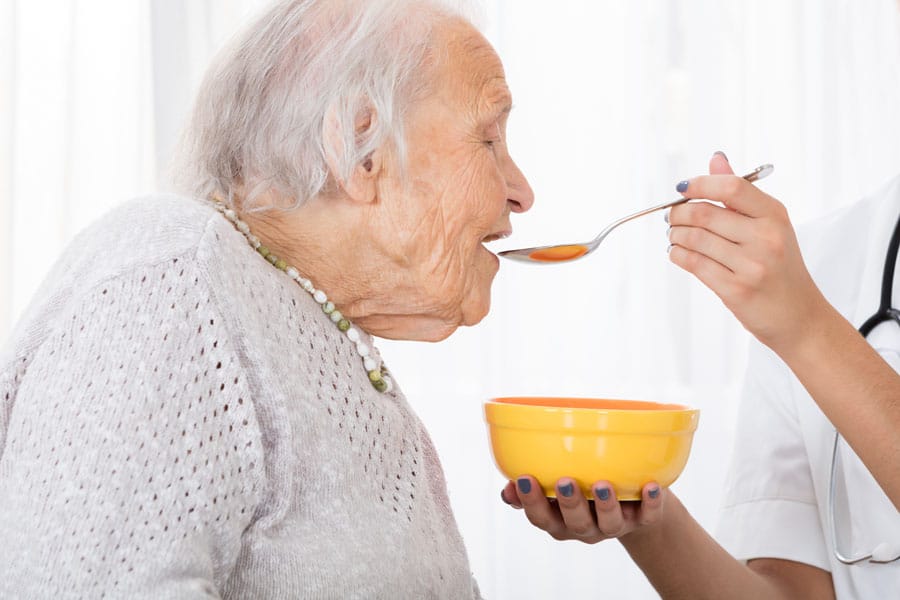
By refusing to eat or drink, the patient is communicating that they are not feeling hunger or thirst and are more comfortable without it. The Dietary Support Team at Connecticut Hospice makes themselves available to answer questions from family members to help lessen fears and anxiety during an already stressful time.
It is the hope of the Dietary Support Team at Connecticut Hospice that by following these recommendations as a guide, it will allow families to spend precious time with loved ones without unnecessary pressure on food and eating. Sitting together holding hands, listening to music, reading a book, or watching a program together are all great ways to feel close and enjoy each other’s company.
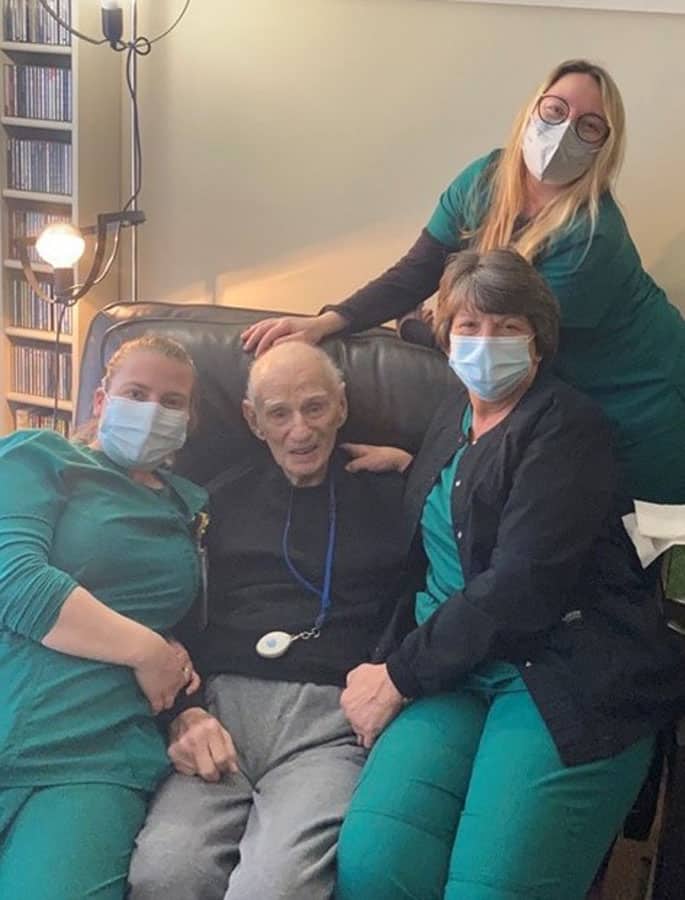
In some cases, a patient who is not eating will still want to be part of a gathering that includes food. Recently, Connecticut Hospice held a 100th birthday party for a home care patient. He was smiling ear to ear and had no cake. It is all about meeting the patient where they are.
At the end of life, the goal for loved ones is to transition peacefully, and as comfortably as possible. This includes honoring patients’ preferences when it comes to foods and fluids. It also means trusting that they know their bodies and are doing what it takes to make their process and quality of life the most comfortable while they transition.

The biggest surprise to most people who enroll relatives in Home Hospice Care is that the care isn’t 24/7. In fact, the care is about ten or so hours per week, meaning that the patient’s family is really the main caregiving unit. Still, many services are offered, and understanding how best to engage with the hospice team is very important in working smoothly together to provide excellent end-of-life care.
It is extremely helpful to everyone if the patient enters hospice care more than hours or days before death. Many of the care offered—social work, spiritual care, and volunteer assistance—is unable to be given if the patient is actively dying at the time of admission. See our list of ready signals to help decide, "When's the right time for hospice care?"
Since that admission is prompted by a physician referral, the family should initiate that conversation with the primary care provider, or the specialist, if the topic has not arisen, and active curative treatment is coming to an end. Asking what a doctor might recommend to a relative is often a good way to open the communication channel in a way that allows professionals to give an opinion without seeming too directive.

Once the referral has been received by the hospice organization, an assessment will be done by a medical professional, usually a nurse. That initial visit can take place in a hospital, a nursing home, or a residence. The admissions visit can take a couple of hours, and families should feel free to ask whatever questions are on their minds.
No information about the patient is too trivial to convey, as the more the team knows, the better they can customize care for that patient. Social work and spiritual care will also be in touch for first visits. They can address many issues that might be on the minds of the family, and can help with financial planning, funeral services, or any part of the grieving process.

Once the patient has been entered into service, a routine is usually established. Home health aides may be engaged to help with everyday tasks, such as bathing, grooming, or feeding. While exact timing requests cannot always be honored, due to staffing issues, every effort is made to provide help in the part of the day when it would be most useful. The case manager, who is usually a registered nurse, comes less often than the LPNs and aides, and is frequently juggling many families at the same time, so don’t be surprised if arrival times need to be flexible. It often helps to remember that your needs will be addressed once they are present, and that others may wait when you have a pressing issue.
Because the team members are busy—and that is no surprise, given what we all know about the shortages in all parts of the medical field since the start of the pandemic—families may be hesitant to call between visits. Nurses and supervisors are all adamant that patients and families should be encouraged to call with questions, especially when there have been changes in the patient’s condition. Knowing what to look for is crucial in being able to stop problems before they become bigger, and having them in the medical record early can make a big difference to everyone.
Another important time to call the care team is for medication questions or errors. No issue is too small, whether it be a missed dose or uncertainty about whether the dose was ingested, to avoid calling. Addressing symptoms is one of the main goals of hospice care, and being able to do that sooner is in everyone’s best interest.
In extreme weather conditions, whether it is a winter blizzard or a summer storm leading to power outages, the hospice team will try as best they can, to provide what might be needed ahead of time. Should there be reasons to worry about patient safety during a storm, they can arrange for transfer to an inpatient facility for respite care.

Respite Care can also be accessed for caregiver relief or breakdown. If a family member who is primary in the caring process is sick, away, or unable to cope with symptoms of the patient, respite care in an inpatient facility is available for up to five days. This is an important safety outlet for the exhausted family members, and should be discussed with the home hospice team if it is necessary.
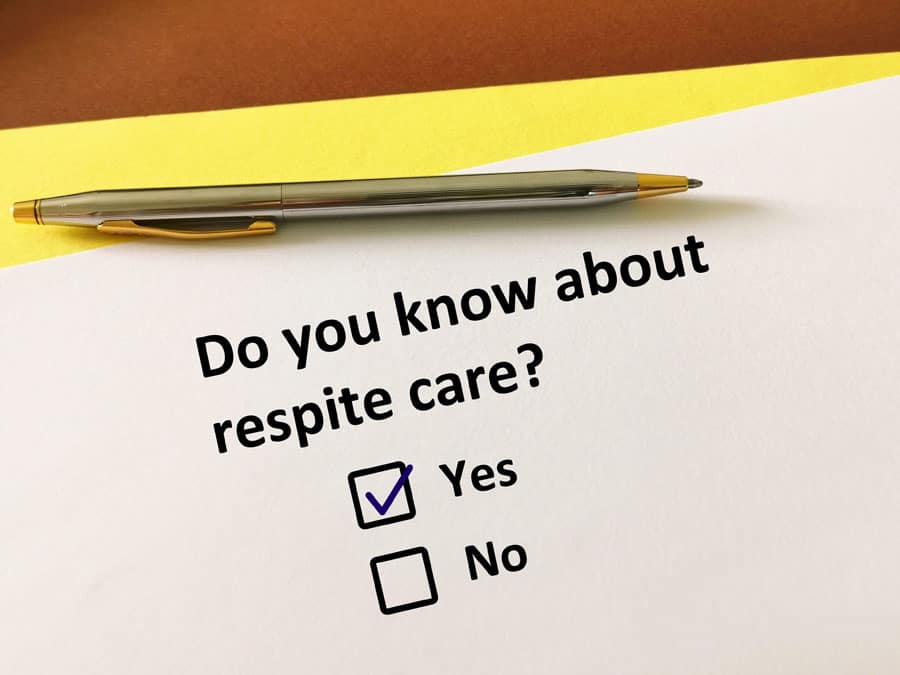
Although home hospice care is given when the “normal course of the illness, untreated” would result in death within six months, many patients in fact outlive that prognosis, sometimes for years. Home hospice care is designed to improve the quality of life, and sometimes that results in an extension of that life span. In those cases, a doctor or an APRN is sent to recertify the patient at various points in the care. Your team will arrange that home visit, which is referred to as a FTF, or face-to-face.
Once the end of life approaches, the team will make sure that you know how to use the emergency drugs in the care package provided for you. Again, do not hesitate to call if you are unclear later as to the proper administration of those medications, or about any other signs or symptoms you might observe. You will be told, and given materials to remind you, that you do not need to call 911. An emergency visit by EMTs will result in lifesaving measures that you may not want, and will very likely land the patient in an emergency room, and sometimes facing a hospital stay. It can be hard, but honoring someone’s DNR (Do Not Resuscitate) request will provide the patient with the final location of his or her choice.
If the patient passes away, call the number provided by the hospice, who will come out and make the pronouncement. Your hospice team will be on hand as soon as is possible, to help with any immediate issues, and will later assist in getting the equipment removed and disposing of medications. Bereavement services will also be provided for thirteen months to the surviving family.
This article is meant to address common issues and questions that arise in the course of providing home hospice care. If there is one thing to take away, it is to call the hospice with any concerns, whenever that may be. Support is a major component of hospice care, and providers are there to guide you through what is an emotionally difficult transition, with expertise and comfort.

One of the most surprising things about the hospice field is that most people have no idea that it is largely funded by Medicare. The Connecticut Hospice was the driver behind, and first recipient of, Medicare funding in 1983. We have a photograph of President Reagan signing the bill. Needless to say, a new era dawned that day. Today, we receive over 90% of our funds from either Medicare or Medicaid.
Because of this healthcare reform, hospice care is no longer something that only the rich can access. In fact, people without strong support systems and safe situations at home are among the most likely to choose to enter hospice care.
Another little-known aspect of hospice care is that coverage is dependent upon certification of terminal illness, which means that a physician has signed that the patient’s disease, with a “normal trajectory”, would lead to death within six months. Clearly, doctors don’t have magic wands, and don’t know exactly how long a patient has to live. They must revisit that opinion after ninety days, and every sixty days thereafter. Some patients live far longer than the first prediction, and some pass away much more quickly.

Another surprise to us is that the six-month period was chosen at random, when the bill was being designed. Many professionals in the field feel that more patients could be helped, at a lower cost to society, if that arbitrary time limit were not imposed. We know, and it should be obvious, that it carries a heavy psychological burden, and deters people who should choose hospice care from doing so. Currently, there are efforts being made to have that set point extended. In the meantime, however, there are still many, many reasons to choose hospice care for yourself or a loved one.
People who do not choose hospice care often get their help from a less comprehensive program, also covered by Medicare, that is called palliative care, or home health care.
Palliative care is meant for those who are recovering from an illness, or going through treatment, and who need help during that period with the daily activities of life. They also must be enrolled formally into such a program, but are intended to be discharged at some point, when their condition improves.
Agencies who provide palliative care are measured by the Center for Medicare Services (CMS) on the improvement in functionality of the patients served. If patients choose this program over hospice care, it often results in poor ratings for the provider, since there would be no improvement—often, quite the contrary occurs.
If a family chooses the palliative, or home health care option, there are some goals similar to those for home hospice care. Those revolve around reducing hospitalizations, or at least the length of stay, allowing the patient to remain in the home (or skilled nursing facility or assisted living facility), and an interdisciplinary approach to care, meaning that social and spiritual services are wrapped around the care given by varying levels of clinicians. Patients are expected, with this service, to be largely homebound.
Should a family feel that they need more services, they should definitely consider home hospice care. If the two programs are presented without names attached, almost everyone votes for hospice care. In addition to the benefits listed above for both types of care, hospice home care layers on additional items that add substantially to savings for the family unit.
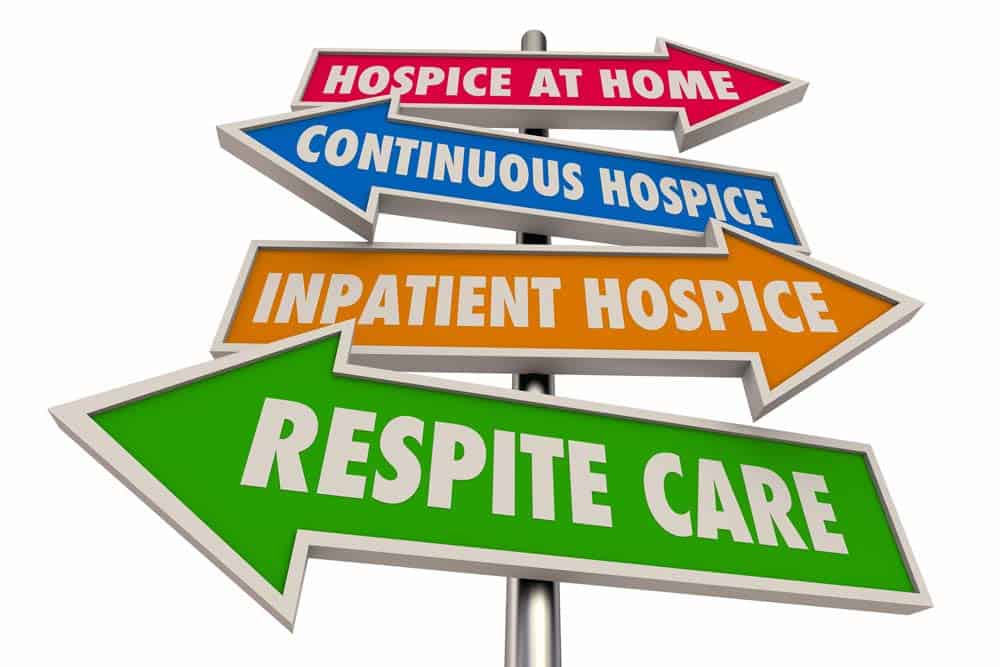
When a patient enrolls in home hospice care, they agree to stop curative treatment for the terminal illness, although they are no longer required to be homebound. The reason for the provision for no further curative treatment is that almost all costs, from the point of entry, are covered by the provider agency. Skilled and personal care, medications related to the diagnosis, medical equipment and supplies, and ambulance transportation are all part of this package, in addition to the other professional involvement of social workers, bereavement counsellors, and pastoral care. A team consisting of those listed above, plus speech, occupational, and physical therapists, dieticians, and certified nursing assistants are all involved in setting the plan of care, and available as needed.
Other levels of service can be accessed when necessary under the hospice benefit, including up to five days of inpatient care for management of symptoms or caregiver breakdown. There is also a greater level of home intervention called continuous care, when more hours of home care are needed to handle symptoms or care. Those latter visits can be scheduled for up to 24 hours, if medically necessary. These two types are also included as part of Medicare hospice benefits.
Numerous studies have shown a longer length of “good days”, as well as, in many cases, more days in total, with home hospice care in place of aggressive treatment. There should be no more debilitating ER or hospital stays, no drug side effects, or onerous radiation or surgery. These results are so compelling to many experts that there is now consideration of allowing some treatment at the same time as hospice care, since the overall improvement in quality of life comes on top of the systemic savings from all of the added, and often fruitless, medical care for disease elimination.
When a family makes the decision to enter a patient into any type of care covered by Medicare benefits, whether it be inpatient or at home, they will be provided with paperwork to “elect” the Medicare hospice benefit, by someone who can explain all of the above material.

We all want the best in end of life care for ourselves and our loved ones. The first step in choosing what is right for an individual is to understand the various options. Although they are not unduly complicated, there is a vast amount of misunderstanding and not enough comprehension of what is provided through a patient’s governmental benefits. Hospices can even make the mistake of assuming knowledge that decision makers don’t have, and no one should feel that they can’t receive help with their choices.
Because events often unfold with unexpected rapidity, the best course of action is to thoroughly explore those options ahead of time, and make a plan for the future that best addresses your anticipated, and unanticipated, needs.
We are here to help. Please feel free to contact our Admissions office at any time, either at [email protected], or at 203-315-5740.

“Palliative Care is specialized medical care for people with serious illness, focused on providing relief from the symptoms and stress of the illness. The goal is to improve quality of life for the patient and the family. Palliative care is an essential part of the care of anyone with a serious illness, including people who are continuing to be actively treated, and can not only help people get relief from symptoms like pain and shortness of breath, but also help them to better understand their illness and its treatment so they can choose the care that is right for them -- from ongoing active treatment to hospice.
Palliative care is different from hospice care because it is appropriate for people who are seriously ill and are continuing treatment. With exceptions, such as continuing routine medications for problems like high blood pressure or diabetes, people in hospice care are no longer being treated for serious or terminal illness. For example, people in hospice care are not treated with chemotherapy or radiation for cancer, and focus instead on the relief of symptoms.”
Joseph Sacco, Chief Medical Officer, The Connecticut Hospice
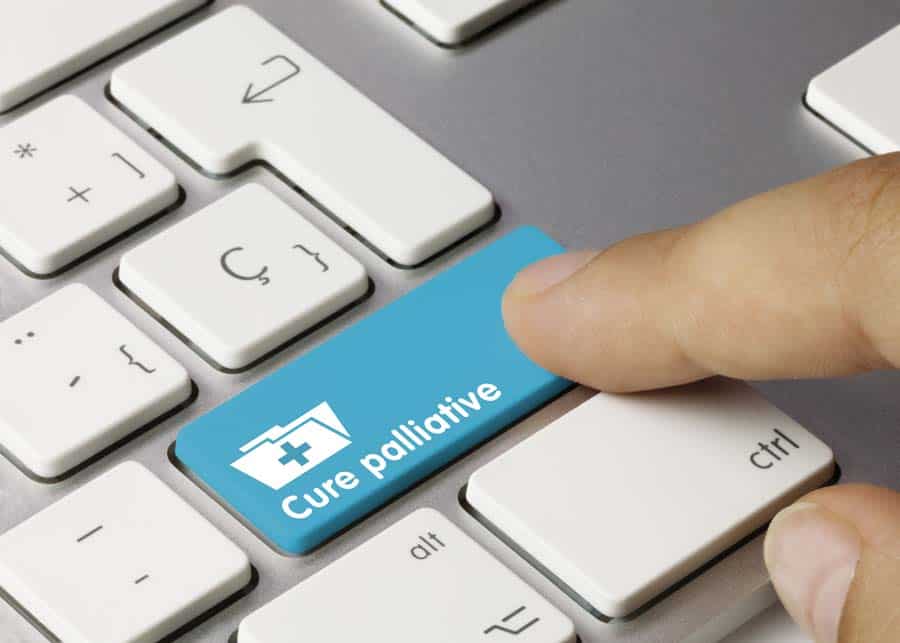
The terms “palliative care” and “hospice” are often used interchangeably, confusing patients and families alike. Many hospitals now offer palliative care services to those in pain. Some are in hospice care as well, some are having active treatment for their diseases, and some are only receiving palliative care for pain management.
Those of us in the field are often guilty of this confusion as well. Often, people who are resistant to the term “hospice”, but are past the point of curative care, are referred for palliative care instead, either to a home health agency or to a home hospice agency.
We have traditionally provided both palliative and hospices of care at the Connecticut Hospice, but have found that, almost without exception, the level of services is fairly comparable. For this reason, we have begun limiting the intake of palliative care patients, as we are judged by CMS, (Centers for Medicare & Medicaid Services) by their level of functional improvement.
Since many are at or near the end of life, little progress in the tasks of daily living is achieved, causing us to get very few stars in the government’s rating system. Hence our hesitancy in taking on patients with whom we cannot succeed, by the Federal definition, yet who truly need our help and care. This is a problem that needs addressing, both by the Federal government, and by physicians. Busy doctors are more likely to suggest palliative care, because it doesn’t carry the weighted overtones of “hospice”.

All of this overlap really goes back to the original Medicare definition of hospice eligibility, which was apparently set more or less randomly at six months of life expectancy at the normal disease trajectory. While that may mean very little in the case of an individual, it has become a catchphrase for our industry, depriving those who cannot be certified of important services, and deterring others who are loath to accept an arbitrary six-month prognosis.
Those of us in the hospice line of business believe that it’s past time to change that standard since the evidence is clear that many, if not most, hospice patients have their lives extended with the skilled and compassionate care that hospice workers give. In addition, people in the care of home hospice are frequently able to avoid or minimize time spent in hospitals and urgent care settings, which patients find very taxing and debilitating, without even considering the expense of multiple hospitalizations. If the time frame being discussed were twelve or eighteen months, more patients would likely choose home hospice, and possibly live as long or longer than with aggressive treatment.
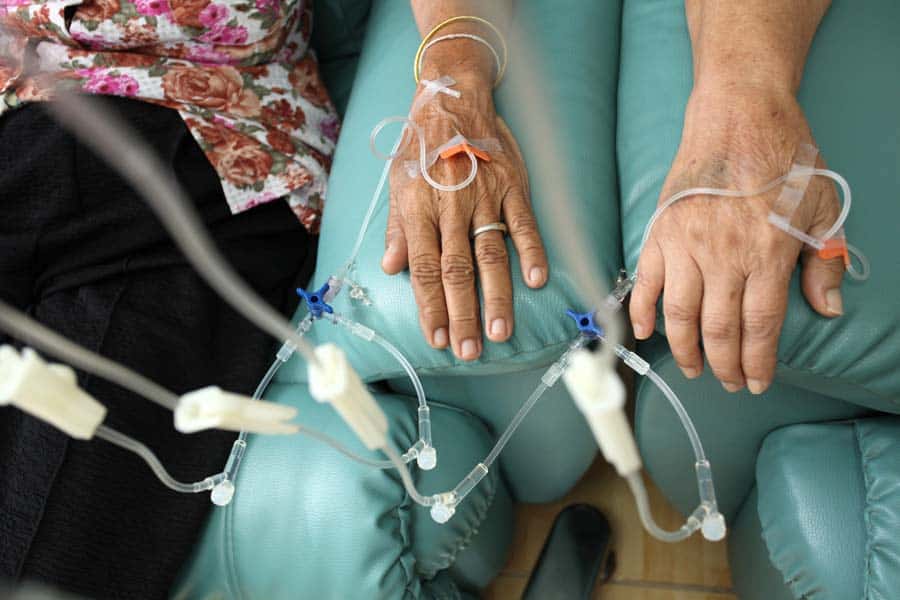
The issue of continuing treatment is complicated and also seems to be transitioning. There are many patients who continue to seek treatment for their disease because they can, and, even if it’s a long shot, they don’t want to stop. Since hospice care is considered to be CMO (comfort measures only), and since hospices are required to pay for all treatment and equipment related to the patient’s diagnosis under hospice care rules, this means that we can’t afford to take someone who is undergoing treatment.
Palliative care is compensated at a much lower rate, meaning that caring for a very ill patient continuing treatment, but needing end of life care, doesn’t make financial sense for a home care agency, if that means that they are providing hospice level care, but being paid for routine palliative care. A terminal patient still having treatment is just as sick, or sicker than, a patient receiving comfort measures only, yet the payment for palliative care is far less than for hospice care. In the case of hospice care, even if an exception is made for certain types of treatment, the expense of that treatment puts it out of reach for hospice budgets.
When deciding on care for a loved one, all of these factors can come into play. It’s hard to discontinue treatment from an emotional point of view, even if it is causing side effects (although newer infusion therapies and immunotherapies are much more likely to be tolerated easily). Also, doctors are taught to cure, not to counsel acceptance of death. However, many patients live fuller, and even longer, lives when symptoms are managed and care is compassionate but not meant to be curative.
This is where the confusion of terms comes in: We would consider that symptom management is both hospice care and palliative care. From a home care billing point of view, however, the two are separate, with palliative care used to mean care for a serious illness where improvement is expected, and hospice care used to mean care for the same illness, once the goal of curing the disease has been foregone. To confuse matters further, Palliative care in hospitals can be “comfort measures only”, which is technically hospice care, or pain management. It’s no wonder that families get confused!
The most important starting point is for the patient and his/her support team to have an honest conversation among themselves, and with their treating physicians, about the effectiveness of current and future treatment, a true prognosis for the disease at hand, and the goals for that person’s life trajectory. Some will choose length of life, some will choose quality of life. Sadly, it often happens that assumptions are made, or hard truths are not voiced, so that treatment and care can be working at cross purposes.

If treatment is still desired, a hospitalized patient may still see a palliative care doctor, but the medical team’s efforts are aimed at gaining a cure, or a remission, of the illness. In many cases, this aim means that the patient may have more discomfort, both from the disease and from the treatment. Doctors also can’t know for sure how different people will be able to tolerate, or not, various regimens for treatment. Often, it is not clear early on whether treatment will work, so all of these factors need to be revisited regularly.
When a patient and his/her family come to the decision that comfort care is the way to go, our full attention can be mobilized in that direction. After decades of experience, we have become experts in delivering care whose aim is to fulfill wishes, promote comfort and closure, and relieve pain. Since our goals are less long term, tolerable pain levels are often left to the patient; he/she might choose to remain more lucid, albeit with discomfort, or to be more sedated and have more relief.
It should be clear by now that the patient and family are at the center of this choice, as they should be. All people should be given enough information to make the decisions that are in their own best interests. In fact, that was a primary reason for our founder, Florence Wald, to establish The Connecticut Hospice as the country’s first hospice. She believed passionately that patients and their families needed to be considered as a unit, and that they should be given their diagnoses and prognoses, which wasn’t commonly done fifty years ago. She trusted in the innate wisdom of those at the end of their lives to decide how to spend their remaining days, months, or years, and in the ability of nurses and other medical professionals to help those wishes to come true. And that is as true today at The Connecticut Hospice as it was at our inception.
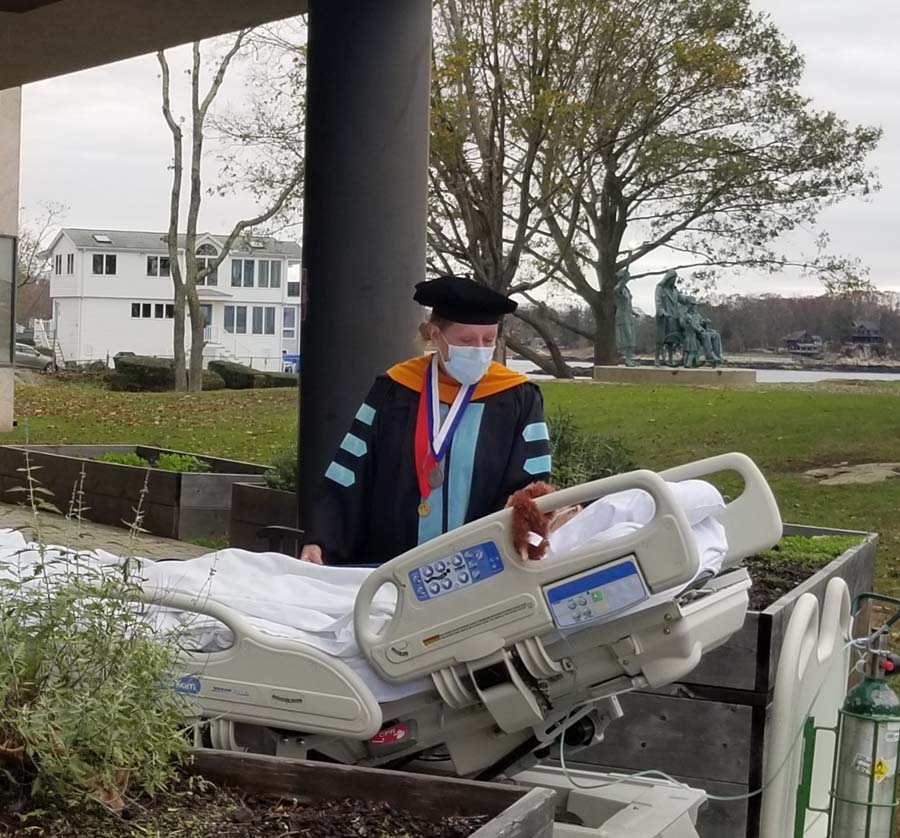
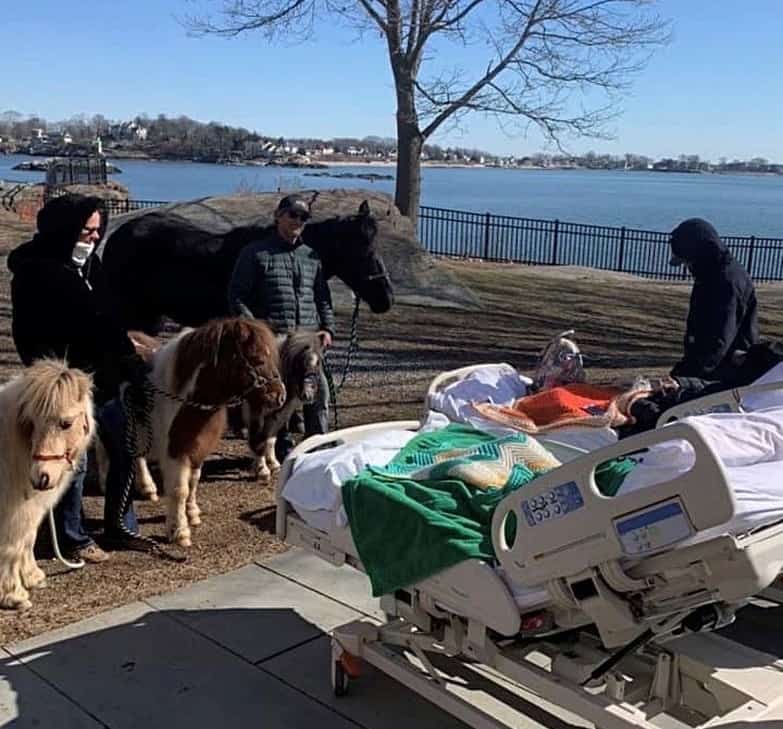
As a not-for-profit, we depend on generous donors to help us provide customized services and therapies that aren’t completely covered by Medicaid, Medicare, or private insurance.
Please make a gift to help us sustain the highest standard of care.
Admissions may be scheduled seven days a week.
Call our Centralized Intake Department: (203) 315-7540.